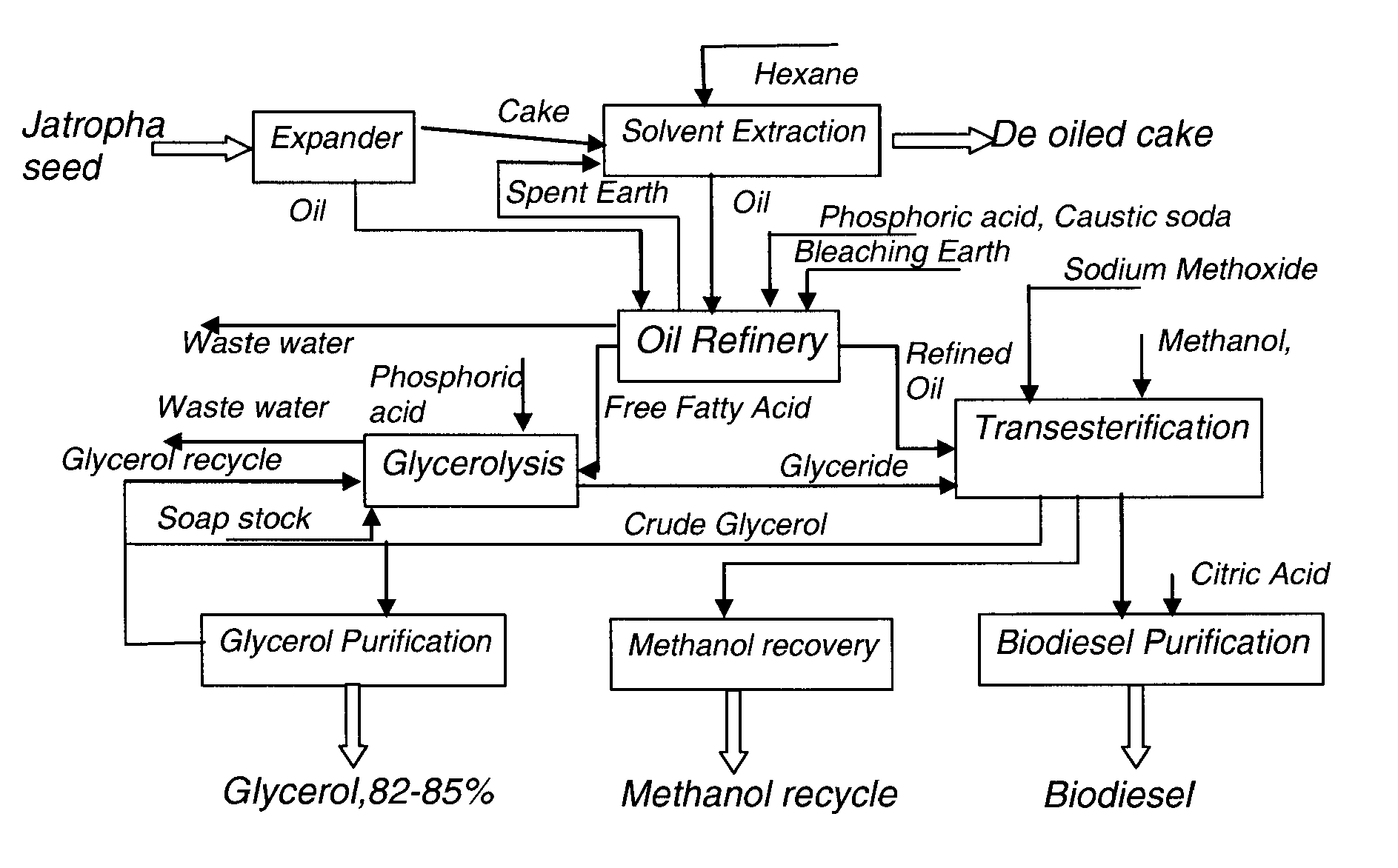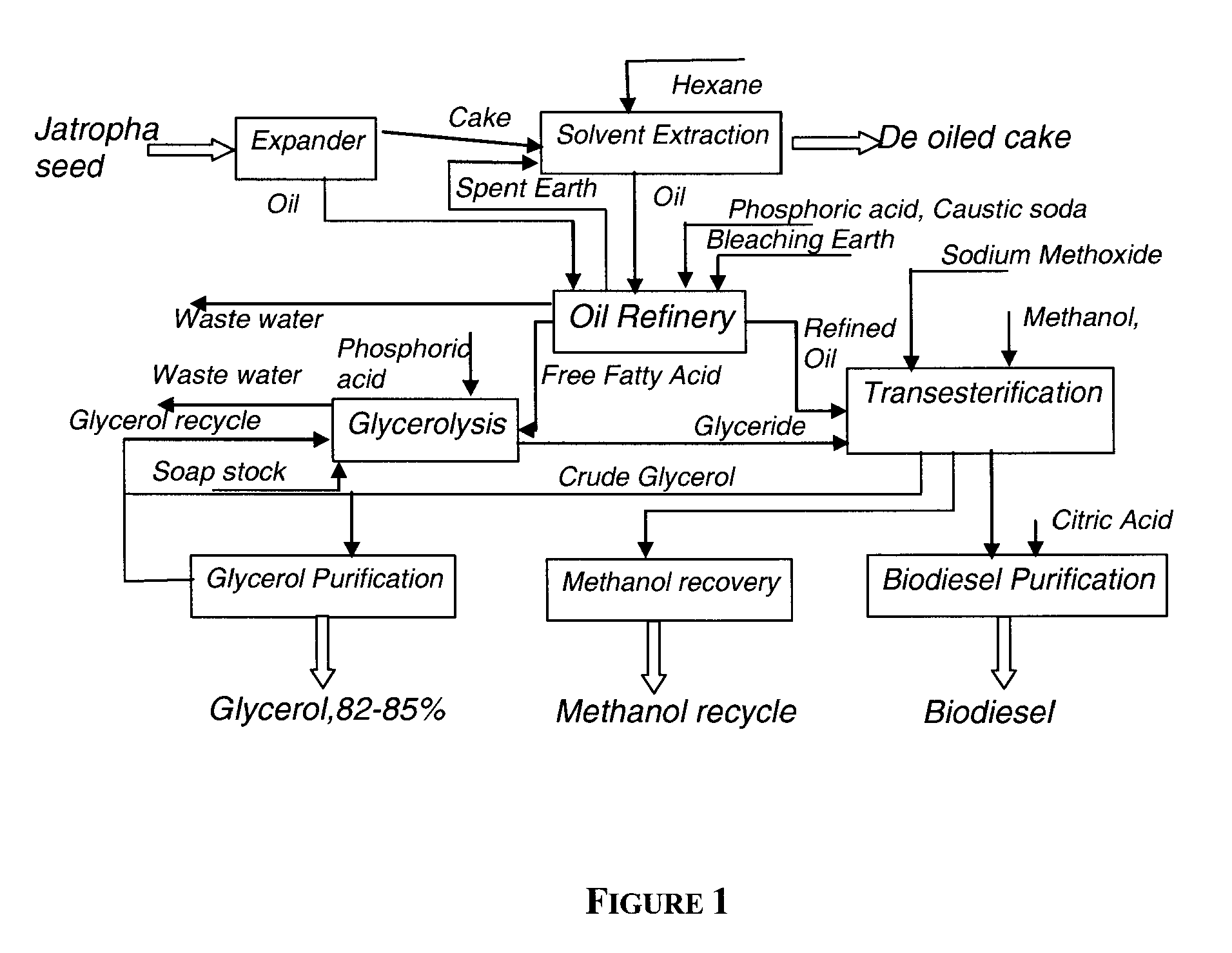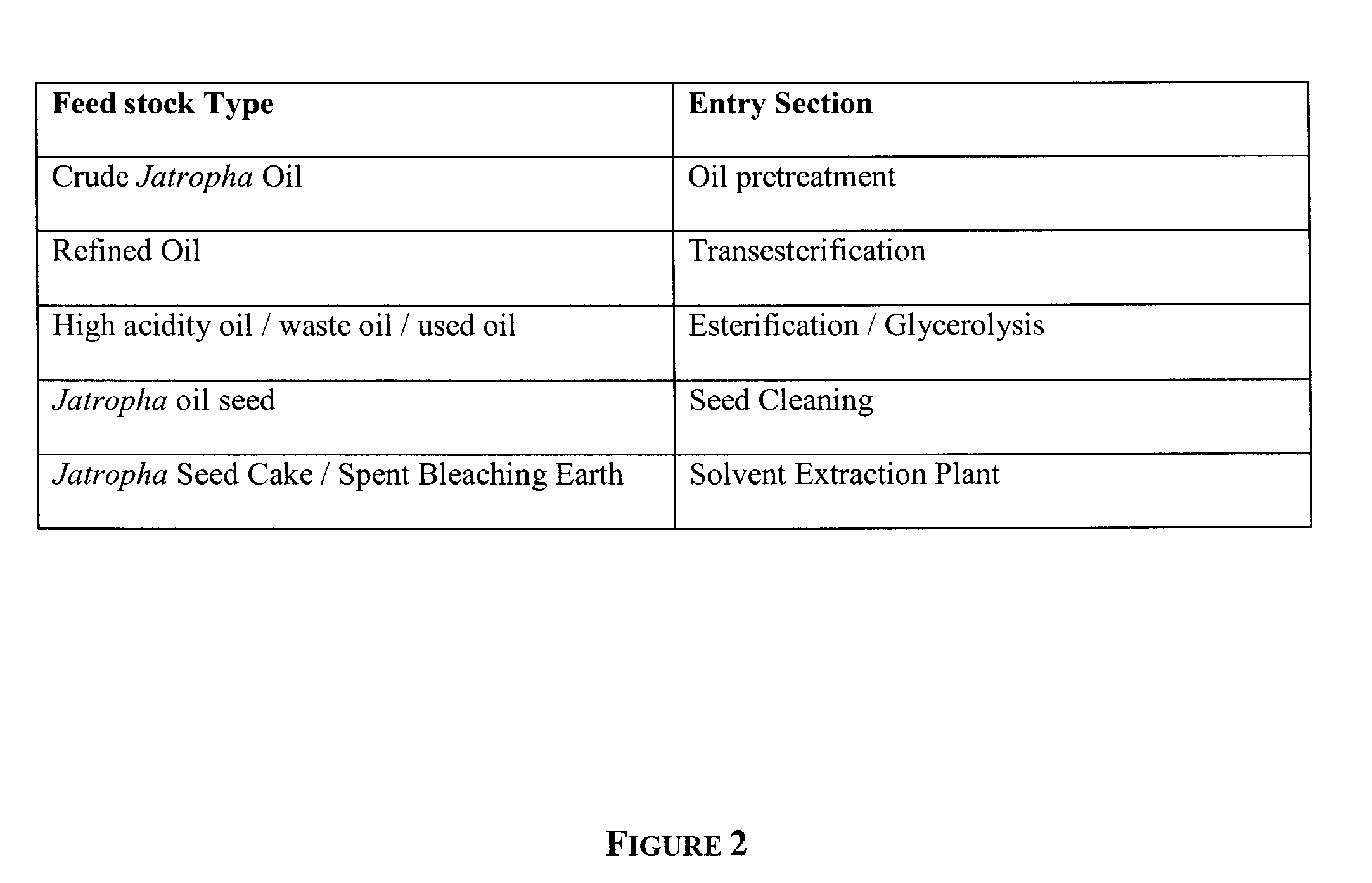Integrated Process for the Preparation of Fatty Acid Methyl Ester (Biodiesel)
a technology of methyl ester and fatty acid, which is applied in the field of integrated process for the preparation of fatty acid methyl ester (biodiesel), can solve the problems of raising future supply and cost concerns, affecting the economic viability of biodiesel fuel, and unable to meet the necessary quality standards
- Summary
- Abstract
- Description
- Claims
- Application Information
AI Technical Summary
Benefits of technology
Problems solved by technology
Method used
Image
Examples
example 1
Seed Pretreatment and Oil Extraction
[0083]Jatropha seeds from a storage shed were fed into a seed cleaner by bucket elevators. The seed cleaner, comprising sieves and magnetic devices, is used to remove all foreign matter from the seeds. The cleaned seeds were then fed to the seed cracker, where corrugated rolls cracked the Jatropha seeds into a suitable size. The cracked seeds were then cooked in a steam cooker at about 70° C. for about two hours, to facilitate easy and efficient extraction of oil. The cooked seeds were then flaked to 0.25 to 0.35 mm size and passed through an oil expander at high pressure lasting for a few seconds to 22 seconds at about 140° C. maximum. The expander sheared and squeezed the flakes to pressures exceeding 100 kg / sq.cm, thereby expelling the first oil fraction from the seeds. The expelled oil was collected and sent to the oil pretreatment section, while the seed cake remaining from the oil expander was sent to the solvent extraction section. A schema...
example 2
Solvent Extraction and Solvent Recovery System
[0084]The seed cake from the oil expander and the spent bleaching earth from the refining section were passed through a cake breaker and roller mill before conveying it to the continuous extractor, where the leftover oil in the seed cake was extracted with the solvent hexane. The hexane was added to the seed cake by spraying the seed cake as it moved along on a solvent tight conveyer. The mass was then sent to the Desolventiser Toaster, where de-oiled cake was separated and discharged for bagging. The volatized oil and solvent went from the Desolventiser Toaster through various heat recovery exchangers and was then flashed in a flasher separator to separate the oil and solvent. The recovered oil was passed through two strippers to remove residual hexane, and the hexane-free oil was then sent to the oil pretreatment section after cooling. The hexane vapors were condensed through a series of surface condensers, and finally, residual vapors...
example 3
Pretreatment of Oil
[0085]collected from the oil expeller and solvent extraction was pretreated by degumming and bleaching before further processing. The collected oil was mixed with phosphoric acid in an acid reactor at about 80° C. and held for about 30 minutes. This was followed by caustic addition and hot water washing of oil at a temperature of 75° C. Next, the gums were removed in a centrifugal separator. The degummed oil was then sent to a continuous bleacher where bleaching earth was added. After bleaching, the mixture was passed through pressure leaf filters to separate out the spent bleaching earth from the bleached oil. This bleached oil was then sent to the oil refining section, and the spent bleaching earth was returned back to the solvent extraction plant for removing residual oil. A schematic of the pretreatment phase is shown in FIG. 5.
PUM
| Property | Measurement | Unit |
|---|---|---|
| Temperature | aaaaa | aaaaa |
| Temperature | aaaaa | aaaaa |
| Temperature | aaaaa | aaaaa |
Abstract
Description
Claims
Application Information
 Login to View More
Login to View More - R&D
- Intellectual Property
- Life Sciences
- Materials
- Tech Scout
- Unparalleled Data Quality
- Higher Quality Content
- 60% Fewer Hallucinations
Browse by: Latest US Patents, China's latest patents, Technical Efficacy Thesaurus, Application Domain, Technology Topic, Popular Technical Reports.
© 2025 PatSnap. All rights reserved.Legal|Privacy policy|Modern Slavery Act Transparency Statement|Sitemap|About US| Contact US: help@patsnap.com



